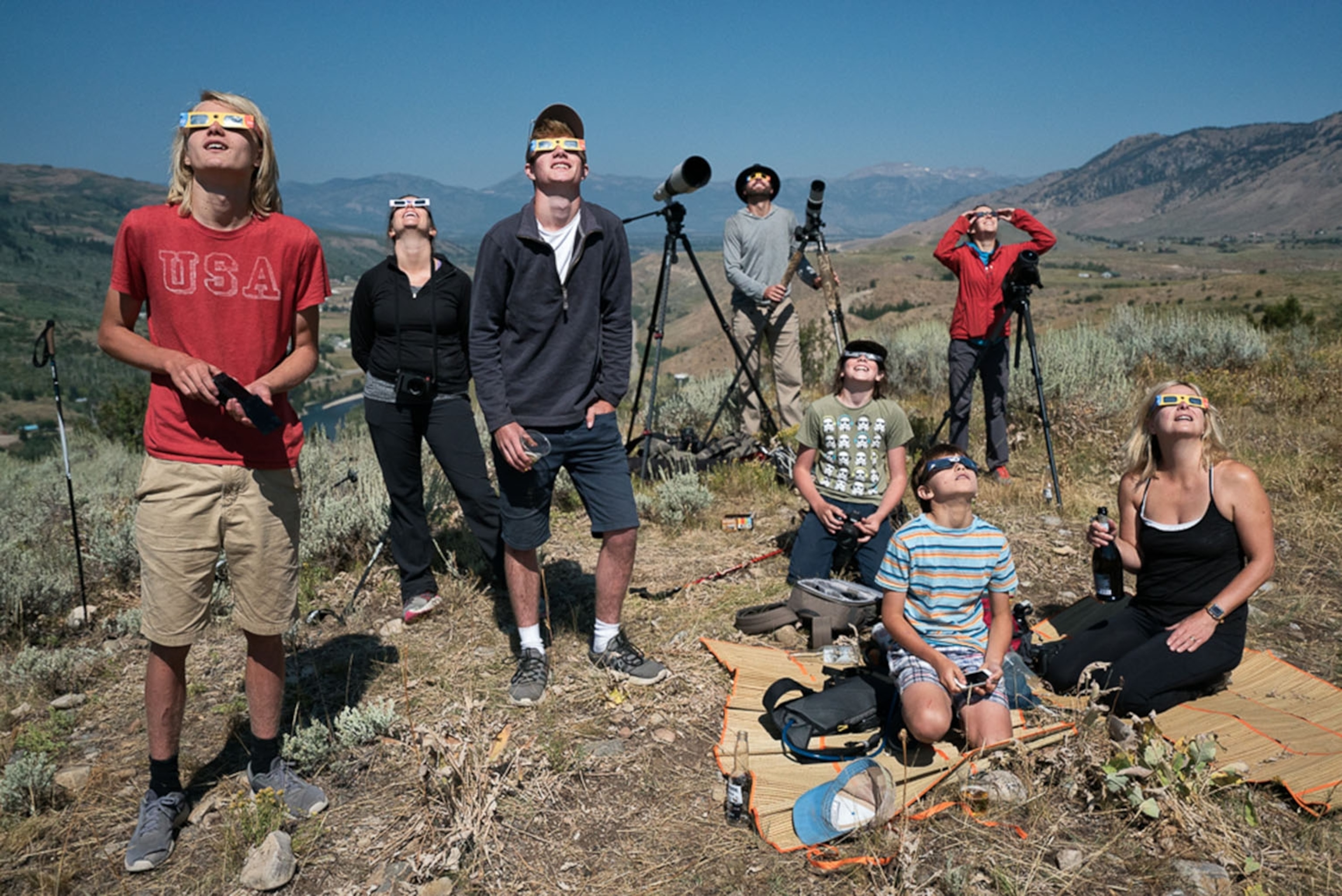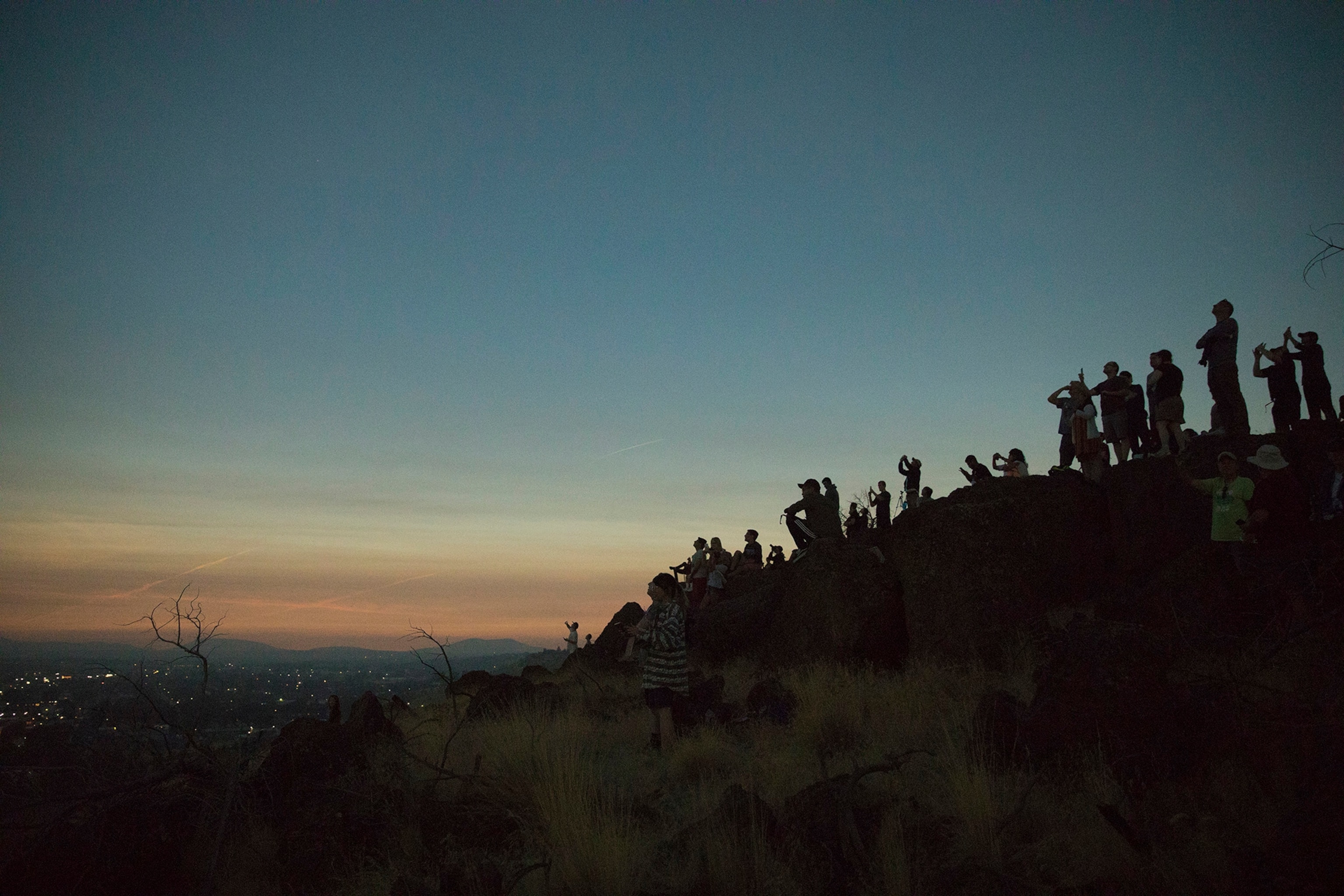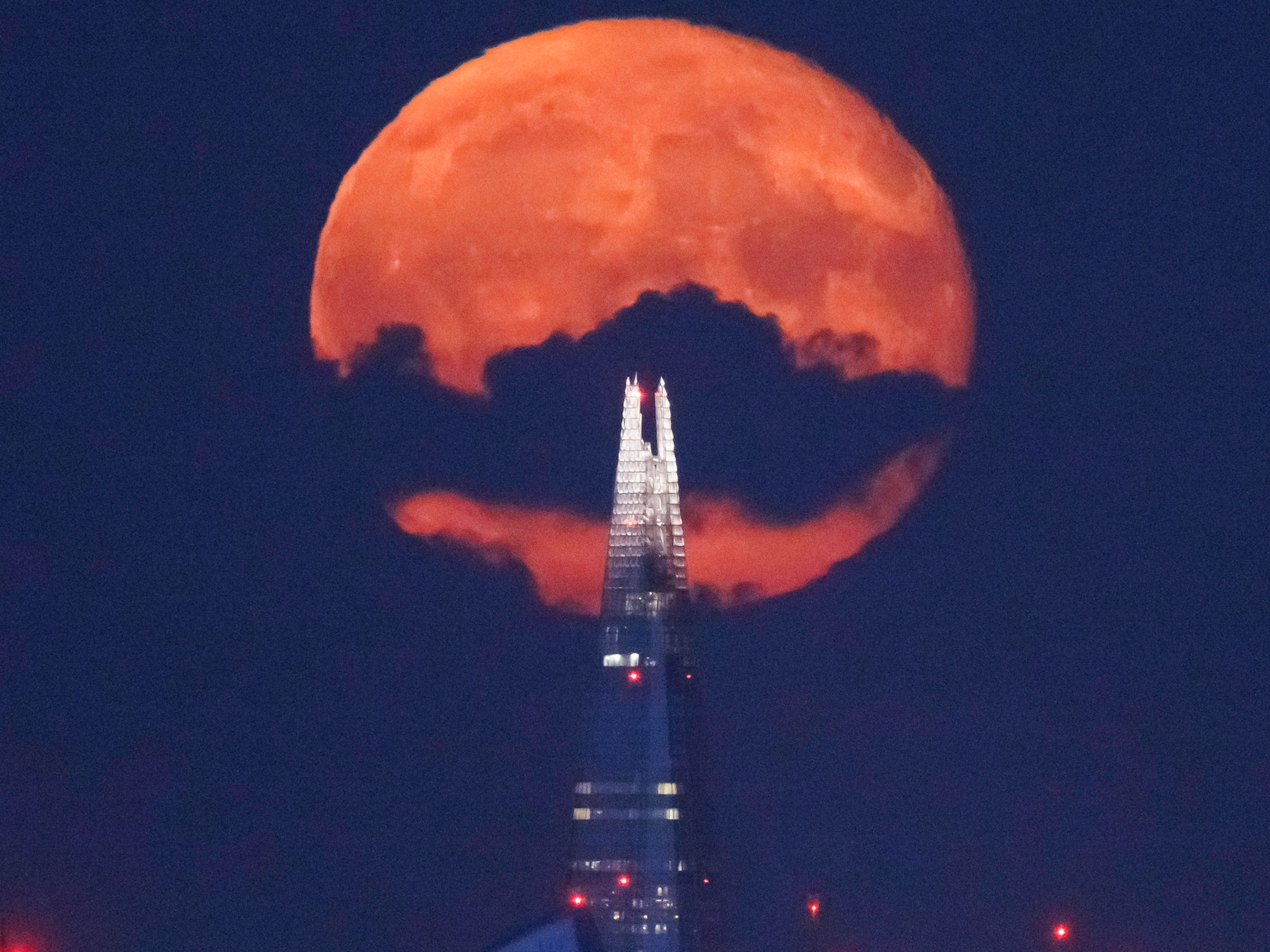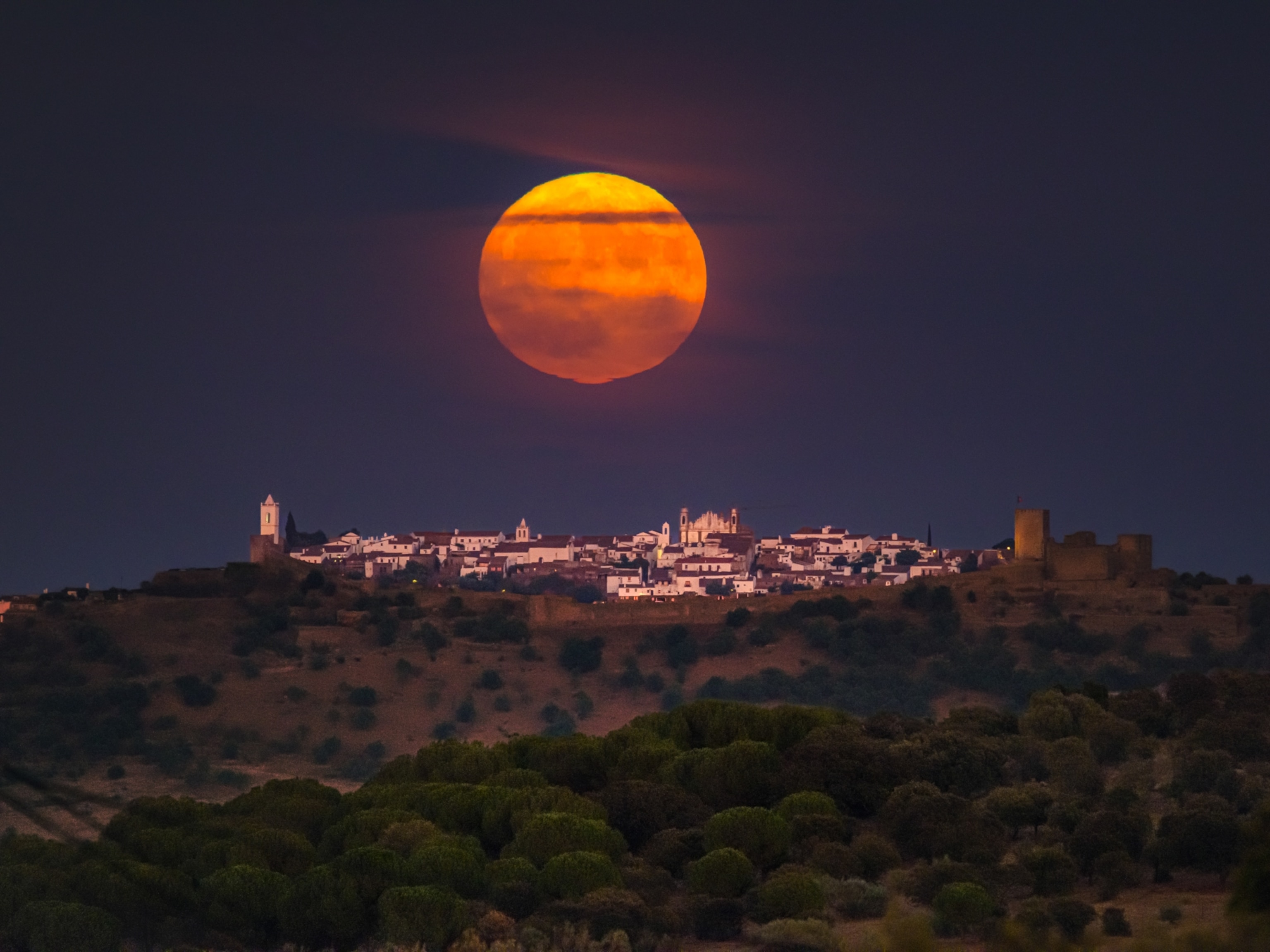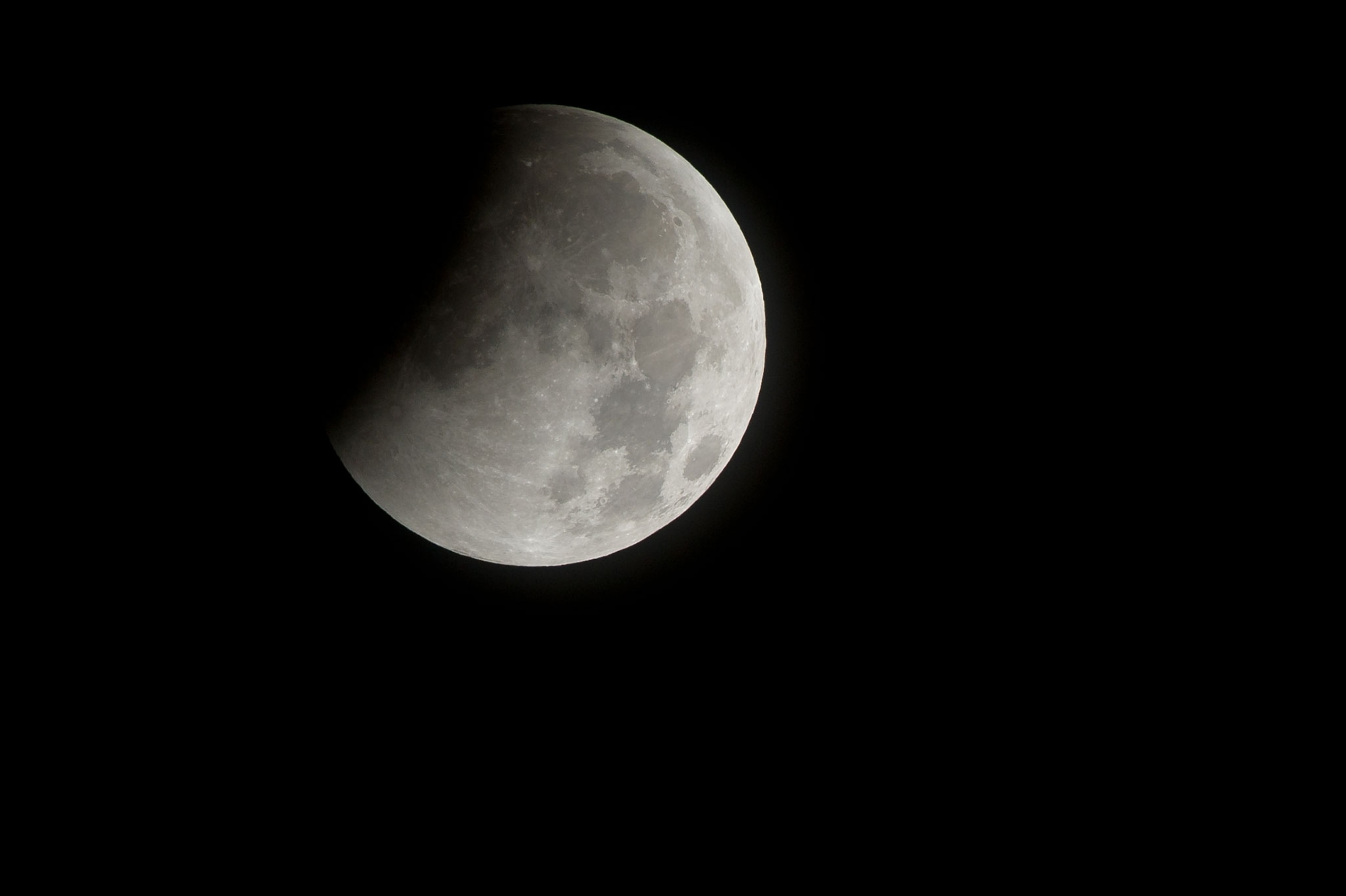
How to Watch the Longest 'Blood Moon' Eclipse of the Century
The record-setting lunar eclipse paired with an extra-close Mars will soon have sky-watchers seeing red.
Get ready for a celestial double feature unlike anything seen in decades: Mars is about to make its closest approach to Earth in 15 years—just as the full moon blushes red in the longest “blood moon” eclipse of the century.
Both the moon and Mars will dominate the overnight hours on July 27 and into the morning of July 28, traveling across the sky beside each other while appearing to be separated by only five degrees, equal to the width of three middle fingers held at arm’s length. (See our favorite photos of the blood moon eclipse from around the world.)
On the 27th, the red planet will reach opposition and be just a few days shy of swinging the closest it has come to Earth since August 2003, allowing sky-watchers around the world to see our neighboring world that night about as big and bright it can ever get in our skies.
And while you shouldn’t expect Mars to look as big as the full moon, as many online hoaxes in past years have suggested, you will also get to see the actual moon painted red as it undergoes a total lunar eclipse.
During a total eclipse, sunlight shining through Earth's dusty atmosphere is bent, or refracted, toward the red part of the spectrum as it is cast onto the moon's surface. As a result, expect to see the lunar disk go from a dark gray color when the eclipse starts to a reddish-orange color during totality.
Related: Exclusive Photos of the August 2017 Total Solar Eclipse
Meeting Mars
At 1 a.m. ET (5:00 UT) on July 27, Mars will reach what astronomers call opposition. This is when the sun, Earth, and Mars are aligned in a straight path, so that Mars appears to rise in the east just as the sun sets in the west, making the sunlit side of the planet visible all night long.
Mars reaches opposition only once every 26 months, when Earth manages to overtake the planet in its tighter track around the sun. But unlike Earth’s more circular orbit, Mars’s path around the sun is fairly elliptical. That means the distance between the two worlds varies, making some oppositions better than others.
Mars will make its closest approach to Earth for this year on July 31, coming just 35.8 million miles (57.6 million kilometers) away. Such a close approach just a few days after opposition means the July 27 alignment will be your best bet to see the red planet shine its biggest and brightest until 2035. (Here's how close encounters with Mars have helped us map the red planet.)

The previous best encounter occurred 15 years ago, when Mars was a record-breaking 35 million miles (56 million kilometers) distant. Such an epic encounter won’t happen again until 2287.
In addition to offering beautiful views, opposition has traditionally set the stage for robotic invasions of Mars. Because of Mars’s proximity and alignment with our planet, the time around opposition is the best for sending spacecraft, saving travel time and fuel costs. For instance, NASA’s Insight lander launched on May 5 and is headed for a Mars landing this November.
Many keen-eyed onlookers may have already noticed the fiery planet growing brighter in our night skies the past few months, making it easy to spot with nothing more than the naked eye. To track down the warrior planet for yourself, go outside after dusk on any clear night and look for the bright beacon rising above the eastern horizon. Mars will glide high over the southern sky throughout the night, setting in the west by dawn.
Most of the time, Mars is not much to look at through a telescope, but that changes during opposition, when the planet becomes a disk filled with tantalizing features. Even a small telescope with about a six-inch mirror will be able to tease out surface details like the southern ice cap (where astronomers may have just found an underground lake) and distinct, dark regions that are windswept, rocky fields.
However, a colossal dust storm has been raging for the past two months on Mars and has enveloped most of the planet, which means telescope views have been a bit hindered. But you can plainly see the effect of all this dust with the naked eye: Mars currently appears to shine with a more yellowish tinge rather than its usual rusty orange hue.
Mini Blood Moon
Also on July 27, fortunate sky-watchers in South America, Africa, Europe, Australia, and Asia will get to see at least part of the longest-lasting total lunar eclipse of the 21st century. The entire event will last nearly four hours, with the maximum eclipse lasting for one hour, 42 minutes, and 57 seconds from 19:30 to 21:13 UTC.
North Americans will mostly miss out on this lunar eclipse, as the moon will not have risen yet. But the lunar display can be observed in its partial phases rising over South America, western Africa, and Europe and setting over Eastern Asia and Australia. The entire eclipse will be visible from eastern Africa and central Asia.
During a lunar eclipse, Earth casts its shadow on the moon. This doesn't happen every time the moon makes its monthly trek around Earth because the moon's orbit is tilted with respect to the planet, so the lunar orb usually glides above or below Earth's shadow.
Total lunar eclipses happen only during a full moon and only when the sun, Earth, and moon are precisely aligned so that our planet's shadow completely blankets the moon’s disk. This usually happens roughly twice a year and can be seen from only one hemisphere at a time.
Popularly known these days as blood moons, a total lunar eclipse can color the lunar orb differently depending on the amount of dust in Earth's atmosphere. Active volcanoes spewing tons of ash into the upper atmosphere, for instance, can trigger deep blood-red eclipses. But no one can predict exactly what color we'll see before each eclipse. (Also find out why the moon looks bigger near the horizon.)
No matter its hue, this blood moon will linger longer thanks to a celestial coincidence. First, the moon will be cutting through the center of Earth’s deep umbral shadow rather than glancing across the shadow’s edges. Second, the full moon will appear smaller and will be traveling a bit slower across our sky.

That’s because the moon will be at its most distant point from Earth in its month-long orbit—known as apogee—during the time of the eclipse. This apogee full moon has been dubbed a minimoon, the opposite of the more popular supermoon, which occurs when the moon is at its closest to Earth.
During this week’s eclipse, the apogee moon will make the lunar disk appear 13 percent smaller than average, and it will take a bit longer for it to glide through Earth’s shadow. We won’t get to see such a long totality again until June 9, 2123.
You don’t have to miss out if you are in the wrong region or if clouds ruin your view: You can still check out the eclipse online via live webcasts from Virtual Telescope, Slooh, and timeanddate.live.
Enjoy the show!
Andrew Fazekas, the Night Sky Guy, is the author of Star Trek: The Official Guide to the Night Sky. Follow him on Twitter and Facebook.


